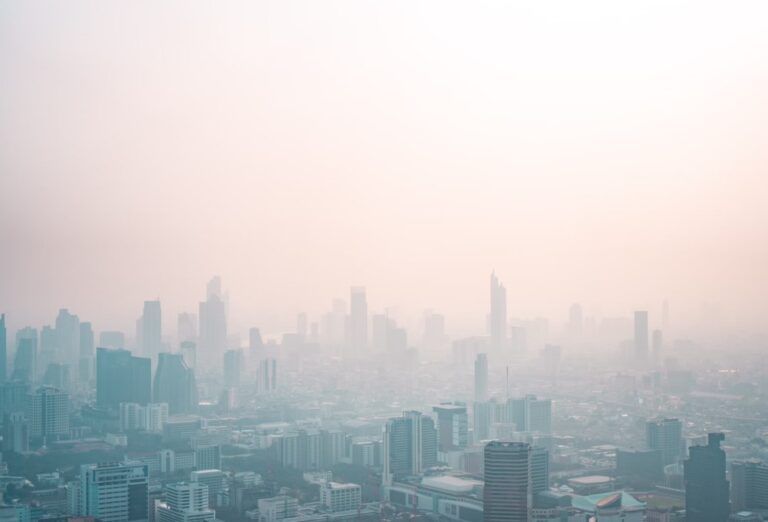Air pollution is a growing threat to global health, and its effects are more serious than previously thought. A recent study showed that air pollution is more harmful to human health than smoking and alcohol, and the situation is worse in South Asia.
Table of Contents
Air pollution: an underestimated threat
Air pollution is an increasingly significant danger to human health. The study conducted by the Energy Policy Institute of the University of Chicago (EPIC) revealed that polluted air is now more dangerous to people’s health than smoking and alcohol.
This finding underscores the urgent need to address a global-scale problem and increase efforts to reduce it.
According to the EPIC report, fine particulate matter, which comes from vehicular and industrial emissions, forest fires and other sources, is the “greatest external threat to public health” worldwide.
So much so that according to WHO, only 0.18 percent of the Earth’s entire land surface offers acceptable levels of smog. This type of pollution is associated with a number of serious health problems, including lung disease, heart disease, stroke and cancer.
If the world were able to permanently reduce these pollutants to meet the limits recommended by the World Health Organization (WHO), average life expectancy could increase by 2.3 years.
Air pollution compared with other health threats
The comparison between air pollution, smoking and alcohol is striking. While smoking reduces overall life expectancy by 2.2 years and child and maternal malnutrition contributes a reduction of 1.6 years, it exceeds both of these factors with a projected increase of 2.3 years in life expectancy.
This underscores the gravity of the situation. And the need to address air pollution with the same urgency reserved for other public health threats.
A major challenge in addressing air pollution is the disparity in the distribution of funds. While regions such as Asia and Africa bear the brunt of pollution, they receive only a small fraction of the global funding allocated to combat this threat.
For example, the entire African continent receives less than $300,000 to address air pollution. This is a much smaller amount than is allocated to other global priorities.
The lack of a global fund
Another crucial problem is the lack of a global fund dedicated to air pollution, similar to the Global Fund that funds the fight against HIV/AIDS, malaria and tuberculosis.
This means that the issue does not receive the same attention and resources. Despite posing a more serious health threat in some regions. It is essential to create a global funding mechanism dedicated to air pollution to effectively address this challenge.
Globally, South Asia is the region most affected by smog. Countries such as Bangladesh, India, Nepal, and Pakistan are among the most polluted in terms of annual concentrations of fine particulate matter.
These high levels have a significant impact on the health of their citizens. For example, Bangladeshis could gain nearly 7 years of life expectancy if pollution levels were reduced to WHO recommended levels.
Progress in China’s fight against pollution
China is making significant progress in the fight against air pollution. The Dragon began fighting smog in earnest in 2014, and the results are evident.
Air pollution decreased by 42.3 percent between 2013 and 2021. If these improvements continue, Chinese citizens can gain an average of 2.2 years of life expectancy. This progress shows that the problem can be successfully addressed with appropriate measures.
In the United States and Europe, significant efforts have been made to reduce polluted air. The Clean Air Act in the United States has helped reduce it by 64.9 percent since 1970. Thus leading to an increase in the average life expectancy of Americans by 1.4 years.
However, the growing threat of forest fires, linked to climate change, is causing spikes in harmful air in several regions. Thus jeopardizing the progress made to date.
Read also: Air pollution, 12 things you can do to help reducing it












